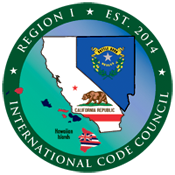Engaging the Power of Data in Fire Safety
In an era where technology and data intersect to shape public safety measures, the significance of harnessing this information has never been more crucial. Chief Larry Cocco from the Toronto Fire Service brings to light the transformative role of data analysis in fire safety management during the latest episode of ICC Region I Radio. This episode dives deep into the concept of Community Risk Reduction (CRR) and how data-driven strategies can elevate fire service effectiveness and community safety.
The What and Why of Community Risk Reduction
Community Risk Reduction is a strategic approach used by fire services to prevent and reduce the impact of fire-related emergencies in the community. CRR isn’t just a set of actions but a philosophy that integrates risk identification, prevention, and mitigation to enhance the safety and quality of life for all citizens. Chief Cocco discusses how leveraging data and metrics not only helps in pinpointing risks but also in shaping preventative measures that are both proactive and reactive.
The How: Implementing Evidence-Based Fire Safety Practices
Chief Cocco outlines several key strategies that have been implemented under his leadership:
- Robust Data Collection and Analysis: The use of comprehensive data to understand and predict fire risks better.
- Educational Programs: Initiatives aimed at educating the public about fire safety, especially concerning new and emerging risks like lithium-ion batteries.
- Code Enforcement: Rigorous application of the Ontario Fire Code to ensure that all safety measures are up to standard.
Through these methods, Toronto Fire Service has seen a noticeable improvement in community safety and a reduction in fire-related incidents.
Where Does Technology Come In?
The role of technology in Community Risk Reduction cannot be overstated. Advanced data analysis tools and new fire safety technologies have enabled fire services to become more efficient and responsive. Chief Cocco highlights the use of these tools in everyday operations, from training and continuous improvement to quality assurance and code enforcement. These technological advancements are pivotal in developing effective CRR strategies that meet today’s safety challenges.
Community Collaboration: Key to Successful Risk Reduction
One of the standout themes from the episode is the emphasis on collaboration and international cooperation. Learning from other regions and sharing successful strategies play a crucial role in enhancing fire safety standards globally. Chief Cocco mentions the importance of:
- Knowledge Sharing: Engaging with other fire services and stakeholders to exchange information and best practices.
- Public Education Campaigns: Collaborative efforts to raise awareness about specific risks, such as those posed by lithium-ion batteries.
Understanding Community Risk Reduction
Q: What is Community Risk Reduction?
A: CRR is a methodical approach employed by fire services to decrease the frequency and impact of fire-related emergencies through risk analysis, prevention, and mitigation.
Q: How does technology influence fire safety?
A: Technology facilitates better data analysis, supports educational initiatives, and enhances the enforcement of safety codes, thereby improving overall community safety.
Let’s Hear From You!
What steps do you think your local fire service could take to enhance community safety further? Are there particular technologies or strategies you believe should be more widely implemented?
Safety as a Shared Responsibility
As Chief Cocco and Tim Spears conclude their discussion, the importance of ongoing education, stringent enforcement, and community involvement is underscored. Fire safety is a dynamic field that constantly adapts to new challenges and innovations. By staying informed and involved, communities can significantly enhance their resilience to fire-related hazards.
Watch the full discussion on YouTube:

